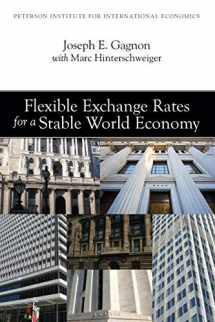
Flexible Exchange Rates for a Stable World Economy
ISBN-13:
9780881326277
ISBN-10:
0881326275
Edition:
Illustrated
Author:
Joseph Gagnon
Publication date:
2011
Publisher:
Peterson Institute for International Economics
Format:
Paperback
281 pages
Category:
Money & Monetary Policy
,
Economics
,
Economics
,
International Business
,
Foreign Exchange
FREE US shipping
Book details
ISBN-13:
9780881326277
ISBN-10:
0881326275
Edition:
Illustrated
Author:
Joseph Gagnon
Publication date:
2011
Publisher:
Peterson Institute for International Economics
Format:
Paperback
281 pages
Category:
Money & Monetary Policy
,
Economics
,
Economics
,
International Business
,
Foreign Exchange
Summary
Flexible Exchange Rates for a Stable World Economy (ISBN-13: 9780881326277 and ISBN-10: 0881326275), written by authors
Joseph Gagnon, was published by Peterson Institute for International Economics in 2011.
With an overall rating of 4.1 stars, it's a notable title among other
Money & Monetary Policy
(Economics, Economics, International Business, Foreign Exchange) books. You can easily purchase or rent Flexible Exchange Rates for a Stable World Economy (Paperback) from BooksRun,
along with many other new and used
Money & Monetary Policy
books
and textbooks.
And, if you're looking to sell your copy, our current buyback offer is $0.53.
Description
Volatile exchange rates and how to manage them are a contentious topic whenever economic policymakers gather in international meetings. This book examines the broad parameters of exchange rate policy in light of both high-powered theory and real-world experience. What are the costs and benefits of flexible versus fixed exchange rates? How much of a role should the exchange rate play in monetary policy? Why don't volatile exchange rates destabilize inflation and output?The principal finding of this book is that using monetary policy to fight exchange rate volatility, including through the adoption of a fixed exchange rate regime, leads to greater volatility of employment, output, and inflation. In other words, the "cure" for exchange rate volatility is worse than the disease. This finding is demonstrated in economic models, in historical case studies, and in statistical analysis of the data. The book devotes considerable attention to understanding the reasons why volatile exchange rates do not destabilize inflation and output. The book concludes that many countries would benefit from allowing greater flexibility of their exchange rates in order to target monetary policy at stabilization of their domestic economies. Few, if any, countries would benefit from a move in the opposite direction.


We would LOVE it if you could help us and other readers by reviewing the book
Book review

Congratulations! We have received your book review.
{user}
{createdAt}
by {truncated_author}


